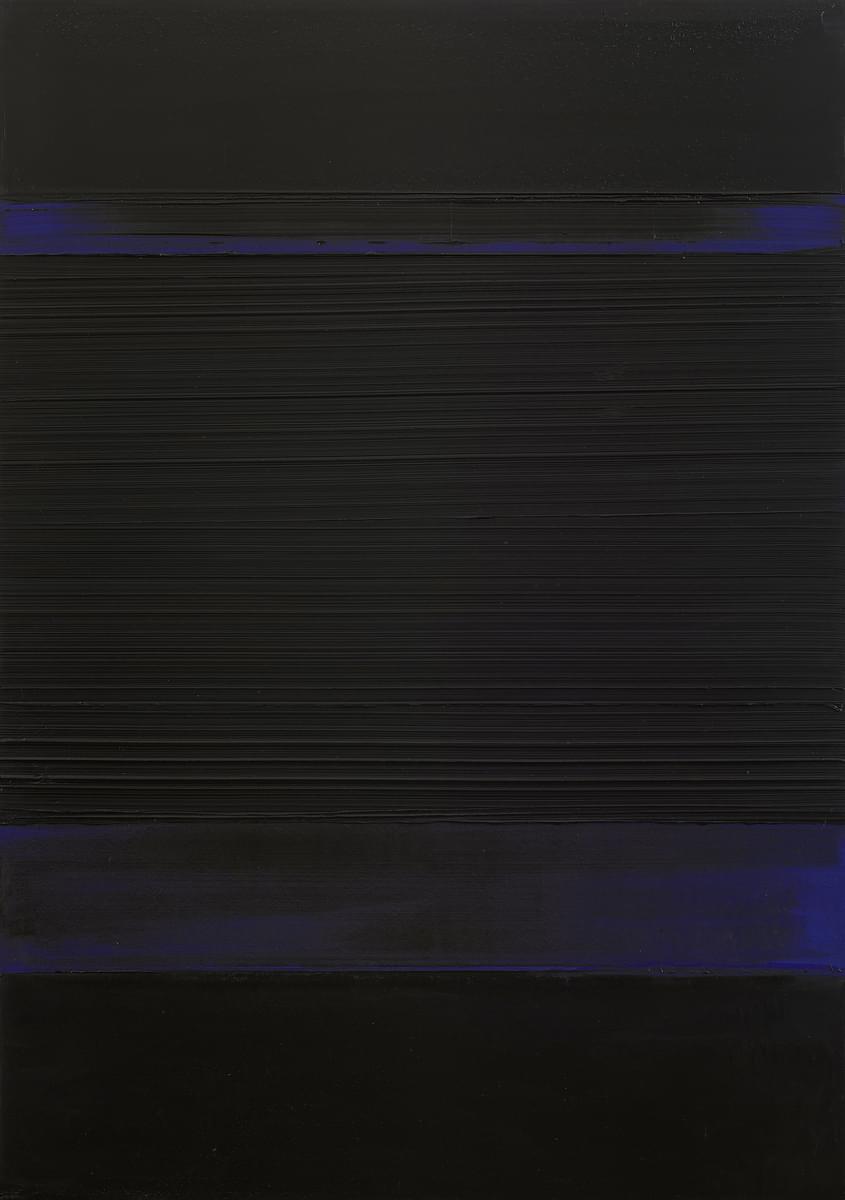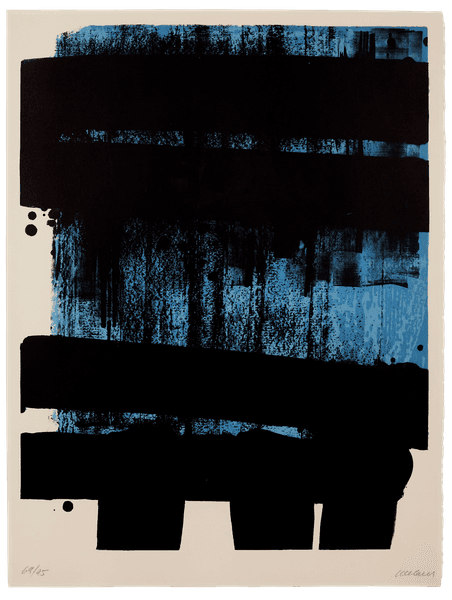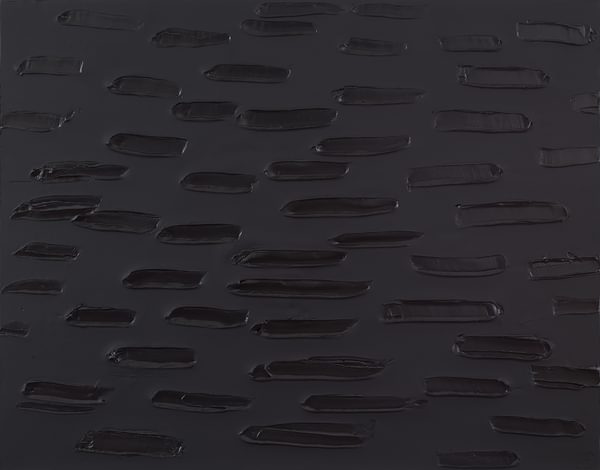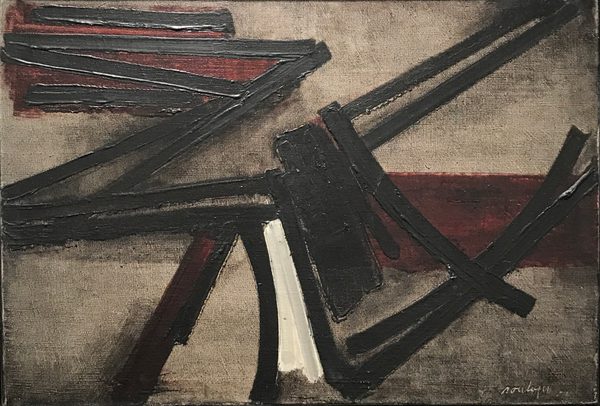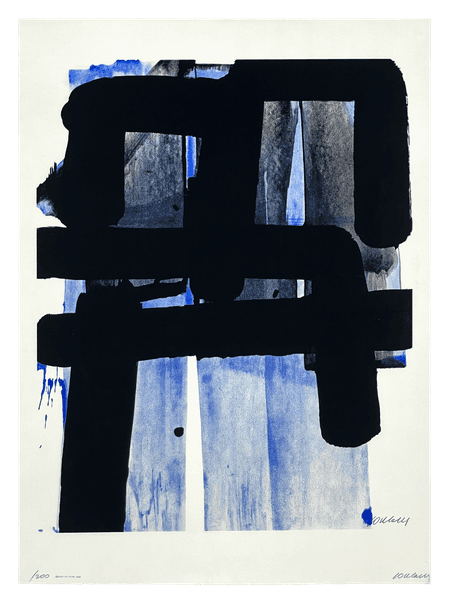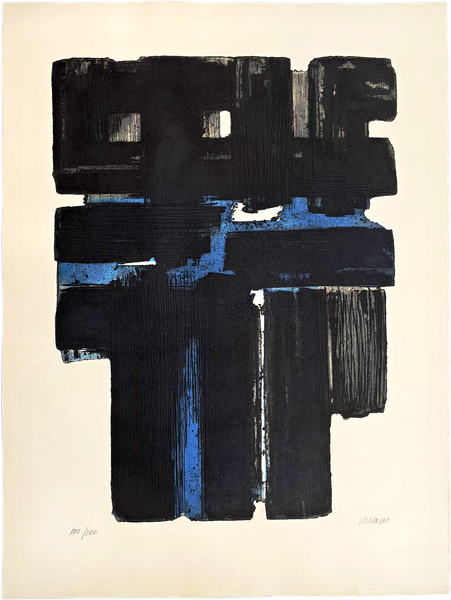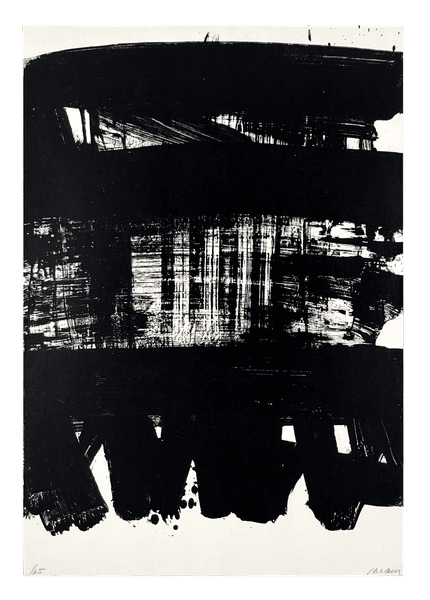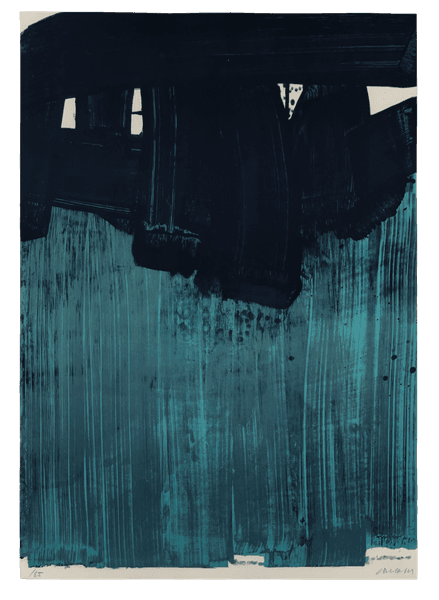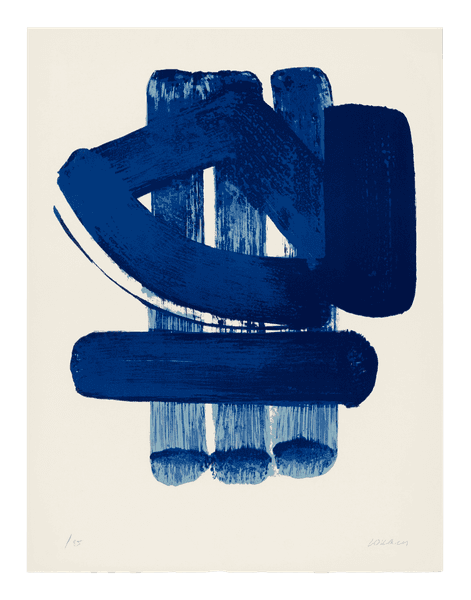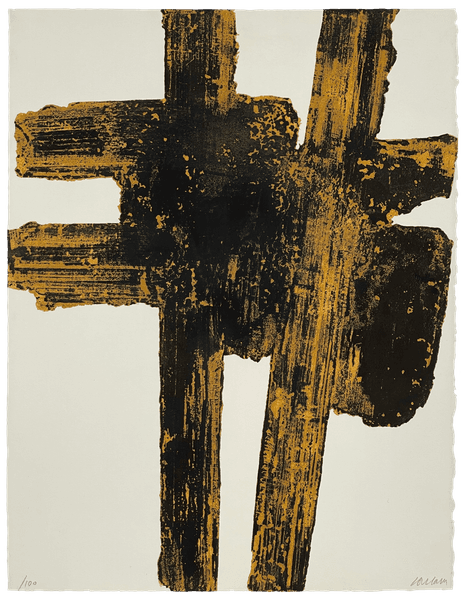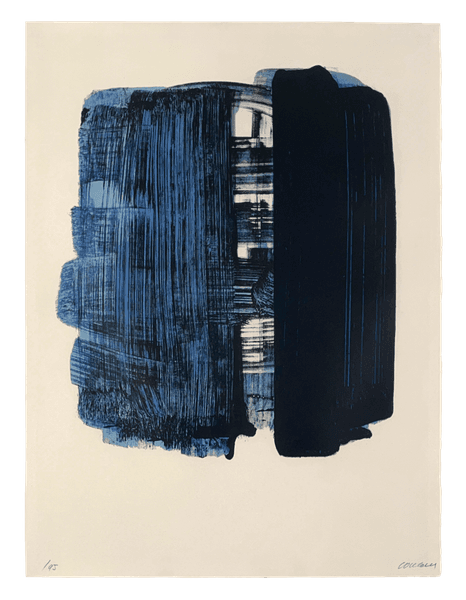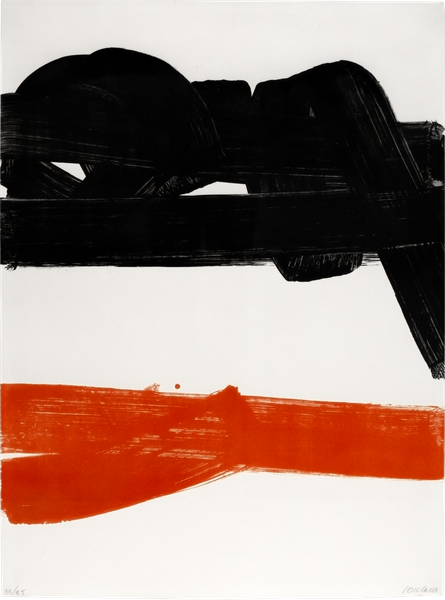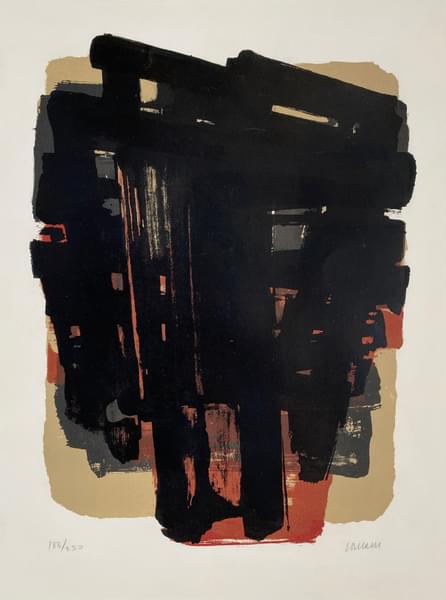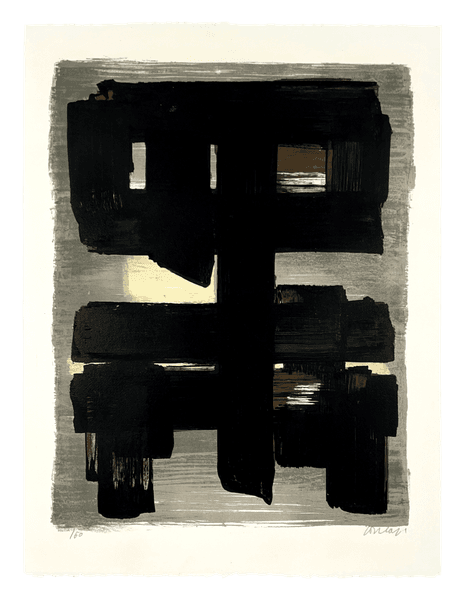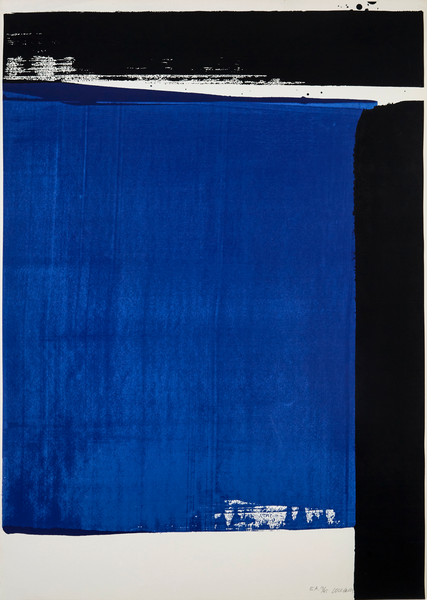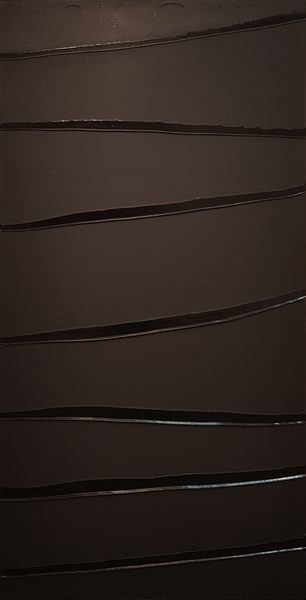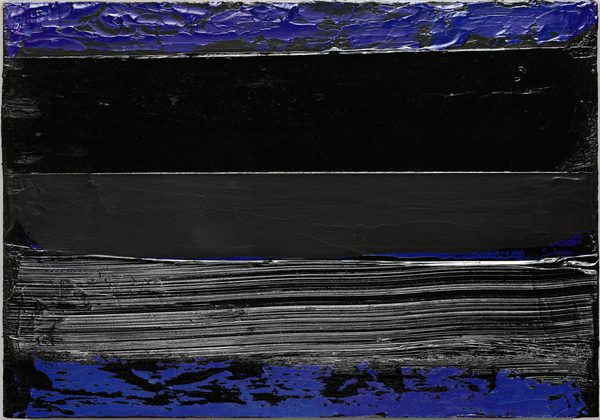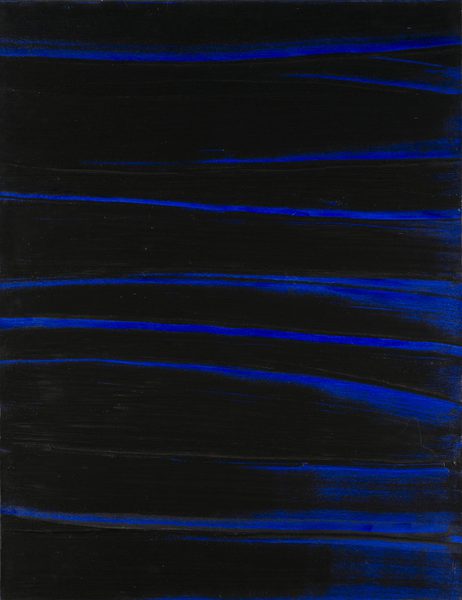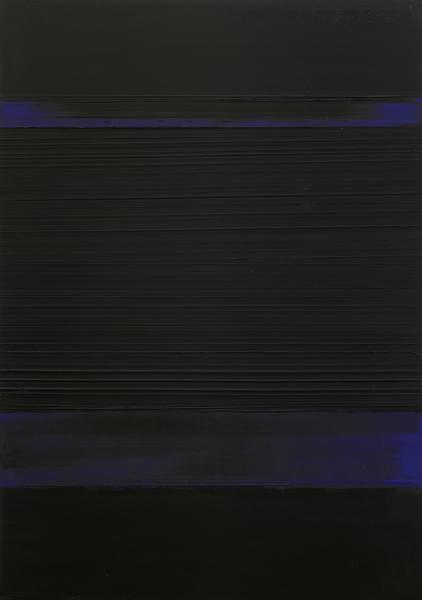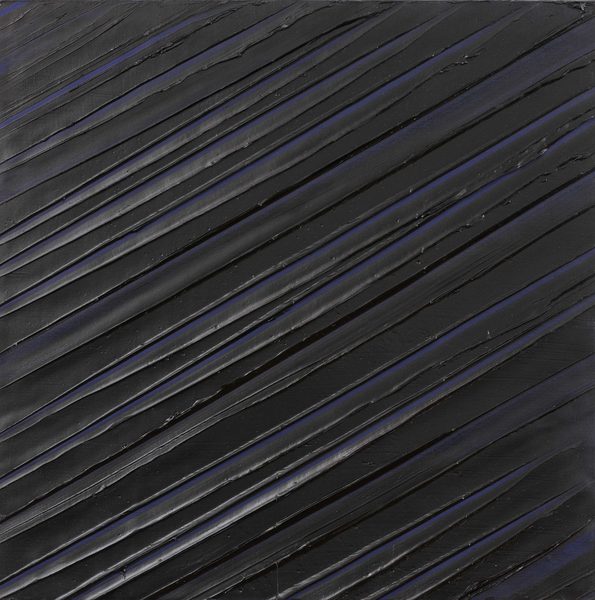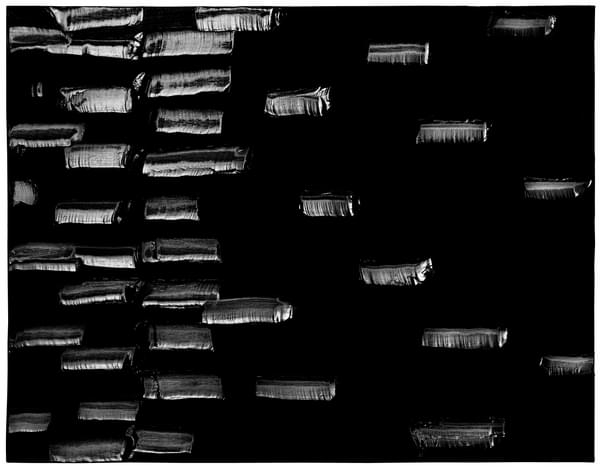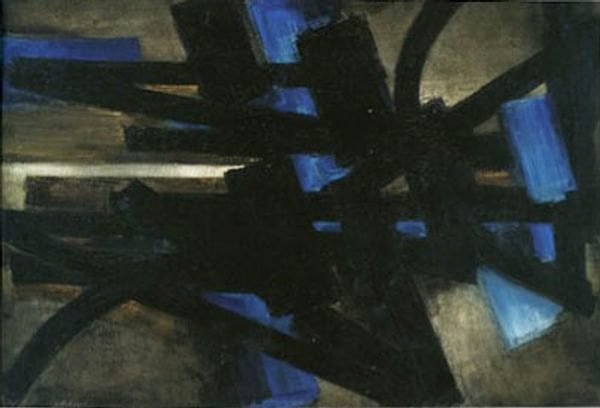Peinture 130 x 92 cm, 8 avril 1989
Of Soulages' works from the outrenoir period, this beautiful 1989 painting with its Rothko-esque flashes of blue remains a favourite out of the many paintings we have handled by the artist.
"From very early on, I practiced a kind of painting that dispensed with images that I never considered as a language (in the sense that language conveys meaning)." Neither image nor language — Pierre Soulages, 1984
Pierre Soulages began painting in 1946, and continues to produce works today at the age of 98. In a text on the artist published in 2014, philosopher Alain Badiou theorized that the artist’s black brushstrokes—a motif that dates back to the very beginning of his career—correlates to the artist’s existential doctrine, which unifies humanity’s relationship to artistic creation:
Isn’t the trajectory of the painter’s work...a resolutely artistic experience, albeit one in full command of its artisanal techniques, whose aim is to be able to say, on behalf of all humanity, “Let there be light!”? Isn’t this how Soulages’s view of the artists of the Chauvet or Lascaux caves should be interpreted, when he said that they ventured into the pitch-blackness of the caves to paint in black a luminous conviction on the walls? And couldn’t it be argued that Soulages’s work creates the discipline of a Sacred devoid of any God?
Indeed, Soulages’s art is one of negation (of color, line, form, spatial illusionism, etc.), yet simultaneously we witness affirmations arising from his stated and restated refutations. Working in all black—or mostly black, as he sometimes incorporates colors
via his works’ underpaintings—the artist renders form according to his relationship to materials and the ongoing act of creation. Soulages explicitly outlined his process in these terms: the artist paints until the disparate elements of the work come together to form a Subject, which, in turn, affects the creator (himself), such that the artist becomes his own Subject, and must then decide to continue painting—i.e. to go “deeper” into the painting—or to destroy the work. Likewise, as Badiou points out, the viewer of Soulages’s paintings can choose to do the same; they can either look deeper into the work or withdraw. In this way, Soulages’s paintings constitute a procedural paradox, as they evoke a sense of completeness but simultaneously embody a certain instability.
The impression they impart is dependent on the choice of the viewer, just as the formal development of the paintings during their creation is dependent upon the artist’s interaction (both effective and affective) with the materials. “A painting is an organization,” Soulages wrote in 1974, “a set of relationships between shapes, lines, and colored surfaces, on which the meanings we give it are made and
unmade.” This statement’s applicability to the artist’s practice endures to the present, as his works remain indescribable and incapable of conveying meaning in absolute terms; rather, they incarnate meaning—manifesting as purely visual objects that may only be experienced optically. However, unlike Minimalist paintings, Soulages’s works are holistic—discrete entities within their surroundings—and rather than asserting a painting-as-object status, they exist as subjective extensions of experiential reality.
Thus, Soulages deftly prevents his work from being subject to hermeneutic discourse, presenting pure visual impression that requires no interpretation, only interaction. The title of the present work is derived from the dimensions of its support and the date of its making (just as Soulages has titled his works for the past six decades), emphasizing the painting’s existence as a delineated entity in space and marking its temporal origin. For the evolution of the work as an object—or rather a “thing” (chose), as the artist prefers to call his paintings—is a perpetually ongoing source of interaction. Approaching both his oeuvre and the vast history of painting as a whole, we may understand Soulages’s mid-career and late works as the determined affirmation of painting’s perpetually new continuity; rather than reading these black works as manifestations of aesthetic nihilism, upon consideration one can view Soulages’s work as an allegory for the reality of truth. Peinture 130 x 92 cm, 8 avril 1989 is a unique construction, one that does not correlate to a sensory or conceptual referent, but rather asserts itself as the set of consequences resulting from the gestures of its creation. It is entirely self-legitimating, and firmly establishes the possibility of a certain knowledge without dictating what that knowledge should be; that undertaking is left to the viewer.
_________________
Sources
Pierre Soulages, Ecrits et Propos, Paris: Hermann, 2009.
Alain Badiou, “Pierre Soulages: An Affirmationist Painter?” Pierre Soulages: New Paintings, New York: Dominique Lévy Gallery, 2014.
Peinture 130 x 92 cm, 8 avril 1989
- Artist
- Pierre Soulages (1919-2022)
- Title
- Peinture 130 x 92 cm, 8 avril 1989
- Medium
- Oil on canvas
- Date
- 1989
- Size
- 51 3/16 x 36 1/4 in : 130.0 x 92.0 cm
- Inscriptions
- Signed, dated, and titled SOULAGES "Peinture 130 x 92 cm 8 avril 1989" (on the reverse)
- Provenance
- Private Collection (acquired directly from the artist); Collection of Georges and Andrée Duby, France
- Literature
- P. Encrevé, L'oeuvre complet, peinture, Vol. III 1979 - 1997, Vol. III, no. 1011, p. 196 (illustrated in colour)
- Reference
- C16-85
- Status
- No Longer Available
Available Artists
- Albers Anni
- Ancart Harold
- Andre Carl
- Avery Milton
- Baldessari John
- Barnes Ernie
- Castellani Enrico
- Clough Prunella
- Crawford Brett
- Dadamaino
- de Tollenaere Saskia
- Dyson Julian
- Elsner Slawomir
- Freud Lucian
- Gadsby Eric
- Gander Ryan
- Guston Philip
- Hartung Hans
- Hayes David
- Held Al
- Hepworth Barbara
- Hill Anthony
- Hitchens Ivon
- Hockney David
- Hutchinson Norman Douglas
- Jenney Neil
- Katz Alex
- Kentridge William
- Knifer Julije
- Kusama Yayoi
- Le Parc Julio
- Leciejewski Edgar
- Léger Fernand
- Levine Chris
- Marchéllo
- Martin Kenneth
- Mavignier Almir da Silva
- Miller Harland
- Mitchell Joan
- Modé João
- Moore Henry
- Morellet François
- Nadelman Elie
- Nara Yoshitomo
- Nesbitt Lowell Blair
- Nicholson Ben
- O'Donoghue Hughie
- Pasmore Victor
- Perry Grayson
- Picasso Pablo
- Pickstone Sarah
- Prehistoric Objects
- Riley Bridget
- Ruscha Ed
- Sedgley Peter
- Serra Richard
- Shrigley David
- Smith Anj
- Smith Richard
- Soto Jesús Rafael
- Soulages Pierre
- Spencer Stanley
- Taller Popular de Serigrafía
- The Connor Brothers
- Vasarely Victor
- Vaughan Keith
- Whiteread Rachel
- Wood Jonas
